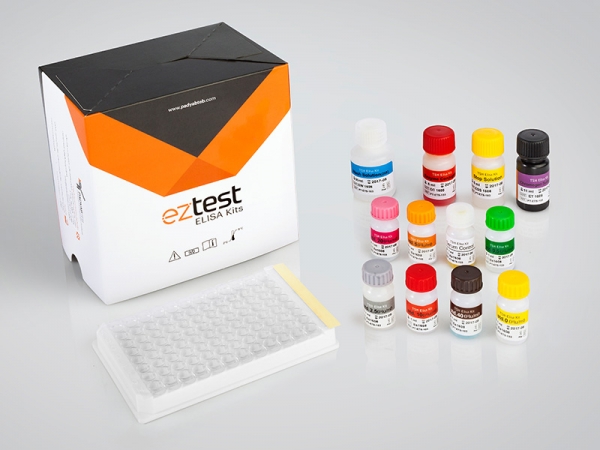| Name | FSH ELISA Test |
| Full name | Human FSH ELISA Test Kit |
| Category Name | Fertility ELISA kits |
| Test | 96 |
| Method | ELISA method: Enzyme Linked Immunosorbent Assay |
| Principle | ELISA principle- Peroxidase Conjugated Sandwich ELISA |
| Detection Range | 0-100 mIU/mL |
| Sample | 20µl Serum |
| Sensitivity | 1.0 mIU/ml |
| Total Time | ~60 min |
| Shelf Life | 12 Months from the manufacturing date |
FSH ELISA kit description:
The Diagnostic Automation FSH EIA test kit is for the quantitative determination of follicle-stimulating hormone (FSH) concentrations in human serum
Materials provided with FSH ELISA Test Kit:
1. Anti-FSH Antibody-coated ELISA Microplate (96 wells)
2. enzyme conjugate reagent: 1 Vials contains anti-FSH-HRP with preservative buffer, ready to use.(1 Vials, 12 ml)
3. standard set, contains 0, 5, 10, 25, 50, & 100 mlU/ml(standard 3rd IS, HMG, NIBSC/WHO) ready for use.(6 vials, 0.5 ml )
4. TMB Substrate: Hydrogen peroxide and tetra-methyl benzidine in preservative buffer, ready to use. (1 vial of 11ml)
5. Stop Solution: a normal hydrochloric acid (1 vial, 6 ml).
6. Concentrated washing buffer: PBS-Tween (1 vial 30ml) (20X)
7. Control serum: FSH in serum with preservatives(1Vial, 0.5 ml)
Materials Required, not Provided:
1. Precision pipettes(20,50,100 µl)
2. Distilled or deionized water
3. EIA kit Microplate Washer
4. EIA kit Microplate Reader with a 450 nm, If possible, 630 nm as reference.
5. Absorbent paper
Introduction
FSH (Follicle-stimulating hormone) is a glycoprotein heterodimer, consisting of two polypeptide units, alpha and beta that are non-covalently bonded. Alpha unit structure is similar to other glycoprotein hormones (LH, TSH, hCG). Beta subunit (FSH β), confers FSH specific immunologic action. FSH is secreted and synthesized by the anterior pituitary basophils. The hypothalamus releases gonadotropin-releasing hormone (GnRH), which stimulates the release of FSH from pituitary. Activity of the pituitary gland and the hypothalamus is become low and high by the concentration of circulating steroids (negative feedback). In females, FSH initiates follicular growth, specifically affecting granulosa cells. With the concomitant rise in inhibin B, FSH levels then decline in the late follicular phase. This seems to be critical in selecting only the most advanced follicle to proceed to ovulation. At the end of the luteal phase, there is a slight rise in FSH that seems to be of importance to start the next ovulatory cycle. FSH regulates spermatogenesis in men. Unlike estrogen, male hormones (androgens) do not reduce the concentration of FSH and feedback relationship provement is possible only through LH. Due to unknown reasons, FSH levels rise with azoospermia and oligospermia in men. Usually in immunoassay methods, the concentration of FSH reduces and LH levels show an increase in testicular tumors. It is thought that this falsely increasing in LH levels is suspended by interaction with hCG-like compounds that can be produced by testicular tumor.
Principle of the assay
FSH test is designed based on immunoenzymometric assay. This assay is based on specific monoclonal antibody by the use of sandwich method. Anti- FSH monoclonal antibody is used to conjugation with HRP enzyme for coating between the solid phase and an Anti- FSH antibody. By addition of the sample serum, the FSH molecule reacts with mentioned antibodies and sandwiches between bounded antibody on the solid phase and conjugated antibody. After an incubation period (45 minutes at room temperature), the sample is then decanted and the wells are washed to remove unbound-labeled antibody. An enzyme substrate-chromogen is added to the well and incubated for 15 minutes at room temperature, resulting in the development of a blue color. The addition of stop solution will stop the reaction and converts the color to yellow. The intensity is measured at 450 nm. The intensity of the yellow color is directly proportional to the concentration of FSH in the sample.



